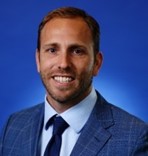Impact of Climate Change on Community Earthquake Resilience
Speakers and Abstracts
Daniel Armanios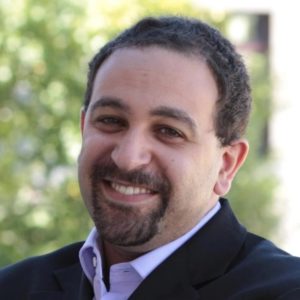
BT Professor, University of Oxford
The Role of Physical Infrastructure on Inequality
Abstract:When we think of physical infrastructure, we often focus on the assets themselves, such as bridges, pipelines, transmission systems, and roads, amongst others. However, we often think less about the role of the people and organizations that influence and guide the design and management of such systems. At the same time, when we think of structural inequality, we think about long-standing institutional norms and practices that advantage one group over another. However, we do think less about how such practices can become physically embodied in infrastructure systems that allow such inequality to scale and to persist. In other words, perhaps inequality is not just “structural” metaphorically (via institutions) but also literally (via physical infrastructure). My talk will bring together these views. First, we will demonstrate that access to infrastructure does not evenly accrue to everyone, unlike how prevailing models incorporate infrastructure. Second, we will demonstrate the deleterious ramifications of this uneven access, namely that certain disadvantaged groups may be systematically shut out from the U.S. high-tech economy. Third, we show one possible mechanism for how this may occur – infrastructure as “institutional relics”. Infrastructure is “institutional” in that they are sited and designed based upon the authoritative standards of the time and/or location. They are relics in that given their long design life, these systems often persist, even after their standards are later updated and changed. Finally, I will discuss some possible strategies for addressing these challenges and their implications and framing with regards to earthquake resilience.
Bio: Dr. Daniel Armanios is the BT Professor of Major Programme Management at the University of Oxford’s Saïd Business School as well as a Distinguished Visiting Professor of Leadership at Tsinghua University’s Schwarzman College. He was formerly an Associate Professor at Carnegie Mellon University in the Department of Engineering and Public Policy. Daniel’s current research interests lie at the intersection of institutions, engineering systems, and public policy & entrepreneurship. More specifically, he focuses on the social processes that influence how physical and scientific infrastructure is built and subsequently used to achieve entrepreneurship, innovation, and sustainable development outcomes.
Sahar Derakhshan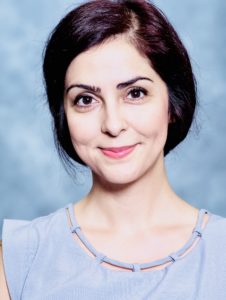
Postdoctoral Fellow, Institute of the Environment and Sustainability (IoES)
University of California, Los Angeles
Intersection between climate change and earthquake resilience: Community resilience
Abstract: One common ground for the impacts of climate change and earthquakes is the community itself and its adaptive capacity, existing vulnerabilities and inherent resilience. This translates into the disproportionate impact of hazard events across communities, which we have seen in previous disasters and will observe more if we do not include this important aspect in our resilience and mitigation planning. What are the current trends in measuring social vulnerability and community resilience, how can these merge with earthquake engineering designs, and where are the research/practice gaps in this union? We will explore the answer to these questions through some examples from previous events and mitigation plans.
Bio: Dr. Sahar Derakhshan is a Postdoctoral Fellow at the Institute of the Environment and Sustainability (IoES), UCLA and an affiliated researcher at the Hazards and Vulnerability Research Institute (HVRI), University of South Carolina. She is a civil engineer (B.Sc.), has received her doctorate in geography from University of South Carolina, and holds a Master of Public Policy (MPP) from University of California, Berkeley. Her work experience extends from industry to research institutions including projects for the World Bank for risk assessment and National Academy of Sciences (Gulf Research Program). Her research interest is to study and assess the effect of geospatial inequalities, social and economic status, and institutions in taking action to foster change in mitigation planning and disaster recovery, for a safer and more resilient community.
Susan Cutter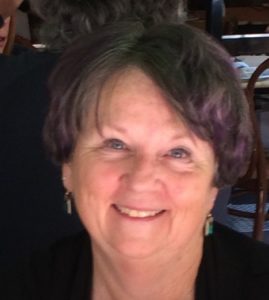
Carolina Distinguished Professor, University of South Carolina
Director, Hazards Vulnerability and Resilience Institute (HVRI)
Disaster Inequality and Equitable Risk Reduction
Abstract: The presentation examines the evidentiary basis for equitable risk reduction in an era of increasing risk inequality. Changes in the nature of hazards and their management have created a new normal of extreme events, increasingly complex and cascading hazards and fostered persistent disaster inequalities. Recognizing such inequalities is not the same as showing proof of them and integrating the empirically based evidence into practice and policy. Examples from South Carolina’s recent disasters experience illustrates how to translate and integrate research into disaster mitigation and resilience policy and practice at local, state, and federal levels.
Bio: Dr. Susan Cutter is a Carolina Distinguished Professor of Geography at the University of South Carolina and director of the Hazards Vulnerability and Resilience Institute (HVRI). She has authored or edited 15 books, 150+ plus peer-reviewed articles and book chapters and mentored more than 60 masters and doctoral candidates. Her research focusses on disaster vulnerability and resilience science with specific reference to methods, models, and metrics. Her scientific contributions include the hazards of place model of vulnerability, the disaster resilience of place (DROP) model, as well as tools for assessing spatial and temporal variability in vulnerability (Social Vulnerability Index or SoVI®) and resilience (Baseline Resilience Indicators for Communities [BRIC] Index). Her policy-relevant work focuses on the evidentiary basis for hazard mitigation and disaster recovery policy and practice at local, state, national, and international levels. In particular, she continues to lead investigations of the disproportionate spatial and temporal impacts of disasters on vulnerable populations and the places where they live. Dr. Cutter is an elected fellow of American Association for the Advancement of Science (AAAS). She received an honorary doctorate from the Norwegian University of Science and Technology (2015) and elected as a foreign member of the Royal Norwegian Society of Sciences and Letters. She was also the recipient of her discipline’s three highest awards: American Association of Geographers (AAG) Lifetime Achievement, Presidential Achievement, and the Wilbanks Award for Transformational Research.
Negar Elhami-Khorasani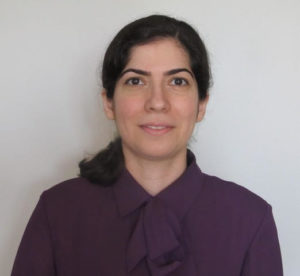
Associate Professor, University at Buffalo
Planning for fire following earthquake considering interconnected infrastructure systems
Abstract: Fire following earthquake is a cascading multi-hazard event in seismic-prone regions and can lead to significant social and economic losses. Past events, such as the 1994 Northridge earthquake with 110 earthquake-related fire ignitions, confirm the increased likelihood of post-earthquake fires. The impacts of cascading events become more acute in modern communities with interdependent infrastructure systems, where disruption in one system could affect the operability of other infrastructure systems. This presentation discusses the impacts of fire following earthquake on dense urban communities. The proposed framework incorporates the effects of earthquake damage on electric, water, transportation, and building inventory. A decision-making algorithm is implemented to guide the response of the fire department to locations of ignition considering available resources in terms of fire engines and water pressure, delayed response time, and fire spread within and between buildings. The proposed framework is applied to a case study and the results are demonstrated in terms of the efficiency of suppression action by the fire department and direct economic losses. The developed framework can benefit public safety and community resilience to cascading multi-hazard events.
Bio: Negar Elhami-Khorasani is an Associate Professor in the Department of Civil, Structural and Environmental Engineering at the University at Buffalo. Her primary areas of research are performance-based design and resilience assessment of structures and communities under extreme hazards including structure fires, wildfires, earthquakes, and cascading multi-hazard events, such as post-earthquake fires. The outcomes of her research enhance safety by developing codes and guidelines, and minimize losses by optimizing mitigation, preparedness, and response strategies. Elhami-Khorasani is the co-Chair of the ASCE/SEI Fire Protection Committee and led the Fire Following Earthquake Task Group in charge of publishing a book on procedures for analysis of buildings for post-earthquake fires. She serves as an associate editor for Fire Technology by Springer Nature. She is also a member of the fib, IAFSS, and the SEAoNY Resilience committees. She was the recipient of the 2020 AISC Early Career Faculty award and the Fire Protection Research Foundation Medal. Her research has been funded by the National Science Foundation, Department of Transportation, United States Geological Survey, National Fire Protection Association, and ASCE Structural Engineering Institute.
alex grant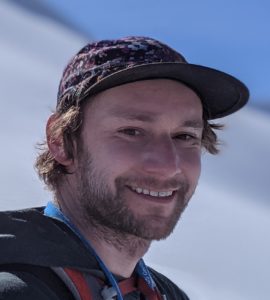
Research Civil Engineer, United States Geological Survey Earthquake Science Center
The Impacts of Sea Level Rise on San Francisco Bay-area Liquefaction Hazard
Abstract: The San Francisco Bay area (SFBA) in California is a densely populated, low-lying coastal region built on alluvial sediment and fill situated between the highly active San Andreas and Hayward fault systems. The region has repeated demonstrated the damaging effects of liquefaction in past earthquakes, and the prediction of future liquefaction potential throughout the Bay Area remains an important topic of research. Motivated by requests from emergency managers in response to the USGS ‘HayWired’ earthquake scenario (a M7.0 earthquake on the Hayward fault), we explored how liquefaction likelihood and impacts are expected to change over the coming decades with climate change driven sea-level-rise. This talk will discuss the results of our study on how future ‘HayWired’ earthquakes may develop greater coseismic (liquefaction) impacts due to sea-level-rise.
Bio: alex grant is a Research Civil Engineer at the U.S. Geological Survey Earthquake Science Center with an interest in regional-scale seismic and coseismic hazards, with emphases on subduction zones and the effects of climate change. alex got his Ph.D. from the University of Washington and B.S.E. from Tufts University in Civil and Environmental Engineering studying earthquake-triggered landslide hazard and risk.
Hussam Mahmoud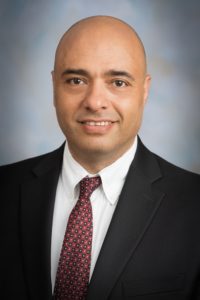
George T. Abell Professor, Colorado State University
Resilience of Healthcare Systems Under the Compounding Impact of Pandemics and Climate-Intensified Wildfires
Abstract: The COVID-19 pandemic has graphically underscored the limitations and weaknesses of the ability of healthcare systems to effectively deal with a novel virus outbreak. Natural disasters in the U.S. further compound the effect of pandemics with conflicting mitigation strategies. Considering the compound impact of natural disasters and pandemics is particularly important given the predicted increase in intensity and frequency of climate-driven natural disasters and the increasing frequency of novel infectious diseases. To date, frameworks for quantifying the collective impact of pandemics and climate-intensified wildfires on hospitals are nonexistent. Moreover, analytical methods for capturing the dynamic spatiotemporal variability in capacity and demand of healthcare systems posed by different stressors are lacking. In this presentation, the combined effect of wildfire, inisfied by climate change, and pandemics on a network of hospitals will be investigated. Wildfire spread model will be used to evalaute the vulernability of the built-environment at the community level while accounting for how future climates might intensify structural vulnerabilities. Structural damgage from the wildfire scenarios will be combined with varying courses of the spread of COVID-19 to evaluate the effectiveness of different strategies for managing patient demand. The results show that losing access to medical care is a function of the relative occurrence time between the two events and is substantial in some cases and is likely to worsen in the future due to climate events. By applying viable mitigation strategies and optimizing resource allocation, patient outcomes could be substantially improved under the combined hazards.
Bio: Hussam Mahmoud is the George T. Abell Professor in Infrastructure in the Department of Civil and Environmental Engineering at Colorado State University (CSU). He is Director of the Structural Laboratory at CSU and the academic advisor for the AISC Student Steel Bridge Competition. He obtained his BSc and MSc in civil engineering from the University of Minnesota and his PhD from the University of Illinois at Urbana-Champaign (UIUC). Prior to pursuing his Ph.D., he was the manager of the NEES Earthquake Laboratory at the UIUC and a research scientist at Lehigh University. Dr. Mahmoud has authored over 250 publications and has given more than 140 presentations including 100 invited talks at national and international conferences and workshops. He is the current chair of the ASCE Committee on Multi-Hazard Mitigation and has chaired and served on other ASCE and AASHTO technical committees. He is the recipient of various awards, including the American Institute of Steel Construction early faculty career award, the American Iron and Steel Institute Robert J. Dexter Memorial Lecture Award, and the Air Force summer faculty fellowship award. He has been invited to various symposia by the U.S. National Academies, the Royal Academy of Engineering, and the Royal Institute of International Affairs and has recently been selected by the NASEM among the New Voices Cohort. His research has received media coverage through citations and interviews in numerous venues, including Nature Climate Change, The U.S. National Academy of Engineering, Smithsonian Magazine, and CNN.
Therese McAllister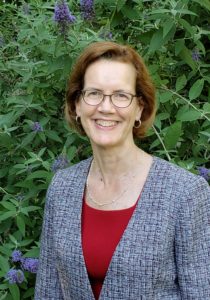
Community Resilience Group Leader and Program Manager, National Institute of Standards and Technology
Enabling Community Resilience through Design Practices
Abstract: Communities are embracing resilience planning to prepare for future hazard events and ongoing stressors. Resilience addresses the ability of a community to recover its services and functions within a specified timeframe, averting potential disruptions, and to make improvements for future events and conditions. Built infrastructure plays a key role in community resilience.
Resilience builds upon well-established concepts that include urban planning, hazard characterization, reliability, life safety, risk management, mitigation, and emergency response. It provides a framework to integrate these and other concepts, such as functional recovery.
An overview of community resilience and its relevance to the built environment will be provided as context for considering resilience in the design process. Resilient buildings and infrastructure minimize damage and losses and help identify damage that is repairable within a specified time to support their role in recovering social and economic functions. While this is an active area of research and development, principles and available guidance for designing resilient buildings and infrastructure will be presented. An update on current progress and challenges will be presented, as well as the contributions that engineers can make to help communities become more resilient, with a focus on performance-based design and other tools.
Bio: Dr. Therese McAllister is the Community Resilience Group Leader and Program Manager in the Engineering Laboratory (EL) at the National Institute of Standards and Technology (NIST). She is also the NIST Technical Liaison for the NIST-funded Center for Risk-Based Community Resilience Planning, led by Colorado State University. She conducts research on community resilience, with a focus on the integrated performance of physical infrastructure and social and economic systems. She has expertise in structural reliability, risk assessment, and failure analysis of buildings and infrastructure systems.
She was recognized with the 2021 ASCE Walter P Moore, Jr award and 2018 ASCE Ernest E Howard Award for her research on structural codes and standards and on resilience. Dr. McAllister is a Distinguished Member of ASCE, a Structural Engineering Institute Fellow, and serves on the ASCE/SEI 7 standard committee, Infrastructure Resilience Division, the Technical Council on Life-Cycle Performance, Safety, Reliability and Risk of Structural Systems, and the SEI Board Level Resilience Committee.
Kit Miyamoto and Amir Gilani
Global CEO, Miyamoto International, Inc.
Manager, Miyamoto International, Inc.
Impact of climate change on the performance of the built environment
Abstract: Natural disasters have caused significant damage to the built environment in recent years. The 2005 Hurricane Katrina, the 2011 Tōhoku earthquake and tsunami, the 2021 Western state wildfires in the US, and the 2022 Appalachia floods resulted in loss of life, damage to infrastructure and significant financial losses. The adverse impacts of climate change execrates the natural hazard vulnerability to infrastructure—sea level rise could inundate roads; larger and more frequent hurricanes could cause damage and increase the risk of flooding; higher rainfalls increase the probability of landslides; and higher temperatures results in additional fire damage. Many of the climate change effects also have adverse impacts on the seismic vulnerability of infrastructure: i) increased temperatures could result in closure of expansion joints for roadway and railroad bridges and induce additional demand into the columns; ii) increased flooding could undermine foundation of structures and bridges; cause scour and undermine their seismic performance; iii) increased fire danger could result in underground electric conducts that can be vulnerable to seismic loading; and iii) and increase rainfall could cause builders in developing counties to use thicker and heavier roofs causing building damage in the earthquakes.
In this presentation, the authors will focus on two recent events; collapse of the 2021 Surfside Condominium collapse in Miami, Fl; and ii) performance of buildings in recent earthquakes worldwide. Structural design mitigation to manage the risk posed to buildings will be discussed.
Steve Moddemeyer
Principal, CollinsWoerman
Command and Control is for Emergencies. Shared Values is for Adaptation and Recovery
Abstract: Before the floods of November, 2021, the Whatcom County Tribes, farmers, small cities, and Whatcom County River and Flood engineers had years of collaboration in the Nooksack River. The Floodplain Integrated Planning (FLIP) brought together conflicting interests to work together to reduce flood damage to farms and cities while also creating and supporting restoration of lost endangered fish habitat. FLIP successfully managed millions of dollars of well-designed solutions with multiple benefits by deploying shared values, good listening, advanced monitoring, and joint project proposals. On November 12, 2022 five atmospheric rivers hit the region in quick succession pouring trillions of gallons of rain into the Nooksack watershed causing widespread flooding in Whatcom and British Columbia. Damage in the billions of dollars took place as the river flooded wide areas of Whatcom as well as an ancient river course heading north to Canada’s Frazier River system. Response to the floods required quick action and multiple rescues. What was once a collaborative partnership between different interests shifted to command and control during and immediately after the flood. Trust built before the disaster was deeply stressed as major real-time decisions with potential long-term impacts were rushed toward implementation under extraordinary conditions. Yet once the floods retreated, two things remained: damage and the command and control mindset. Well-meaning state and federal emergency management agencies who excel in first response stepped into the community with a mix of opaque processes, acronym-heavy procedures, non-intuitive programs and regulatory expectations. At what point in a disaster is it appropriate to transition from command and control to collaboration? How can federal and state entities with disaster response priorities leverage local trust and rely on shared values collaborations to enhance the adaptive capacity of locally diverse communities as they recover from extreme events?
Bio: Steve Moddemeyer is a principal of CollinsWoerman with 31 years’ experience leading governments, land owners, and project teams towards increased sustainability and resilience. He creates tools, policies and programs that empower communities to implement resilience principles into planning for land use and urban infrastructure. He works on climate change adaptation, sustainability strategies for large urban redevelopments, and advanced sustainability strategies for land owners, cities, counties, and utilities. Steve is currently serving as Chair of the National Academies of Sciences, Engineering, and Medicine’s Committee on Hazard Mitigation and Resilience Applied Research Topics. He is an Advisor to the John Hopkins Center for Health Security on the Post-Pandemic Recovery Project. He is a past member of the National Academies of Sciences Resilient America Roundtable (two terms). He serves as an advisor to the University of Washington Masters in Infrastructure Management and Planning, Member of the International Union for the Conservation of Nature: Resilience Theme Group, and founding member of The Little Think Tank, a group of academic and policy experts that focus on resilient recovery actions for American communities. Trained as a landscape architect, Steve creates multi-benefit implementation strategies that bring together natural and human systems by applying socio-ecological principles to system design, urban design, policy design, and industrial symbiosis development.
Adam Rose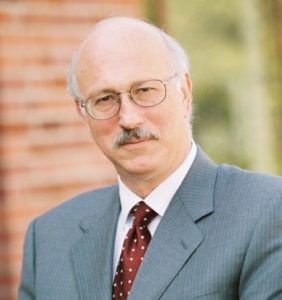
Professor, University of Southern California
What Businesses Can Do to Plan for Recovery from Earthquakes and Climate Change Impacts Simultaneously
Abstract: Concern over climate change is increasing as evidence mounts about its destructive forces. This includes the effects of short-term climate variability (e.g., droughts, wildfires, more intense hurricanes) in addition to longer-term threats (e.g., temperature increases, sea-level rise). Many are quick to point to a supposed dichotomy between climate-disasters and earthquakes. This is the case when one considers the distinct causes and some of the impacts, but is much less so when it comes to recovery. If a factory with damage to its roof cannot produce at its pre-disaster level or if it no longer has access to one of its critical production inputs because one of its suppliers is damaged, the cause of the damage is irrelevant. Factories, and any other businesses and institutions, are essentially the same boat in terms of repair and reconstruction, as well as coping with the critical input disruption in the meantime.
Resilience is often defined broadly to include all actions to reduce risk, ranging from mitigation to emergency planning to emergency management to recovery. However, the Latin root of the term is to “rebound”. This presentation will focus on that aspect and present important concepts related to static and dynamic aspects of resilience, as well as inherent and adaptive ones. It will present 11 tactics the businesses can use to cope with supply disruptions in ways that repair and reconstruction can be accelerated so as to reduce business interruption (BI) losses. While property damage is often the emphasis of risk reduction, and the primary target of pre-event mitigation, BI just begins when the disaster strikes and continues until the entity has recovered. In fact, BI, typically measured in terms of gross domestic product or employment, can often exceed the level of property damage (e.g., the 2001 World Trade Center Attack Hurricane Katrina). Resilience in this context is all about business continuity and reducing BI.
The presentation will also present results of recent research to estimate the cost-effectiveness of 11 resilience tactics. The estimation is based on surveys of victims of Hurricanes Sandy Harvey. It will also present a decision-support tool known as the Business Resilience Calculator (BRC), which small and medium-sized businesses can use to identify and implement the most cost-effective resilience tactics.
Bio: Adam Rose is a Research Professor in the University of Southern California Sol Price School of Public Policy, and Senior Research Fellow at USC’s Center for Risk and Economic Analysis of Threats and Emergencies (CREATE). He has spearheaded the development of CREATE’s comprehensive economic consequence analysis framework and has done pioneering research on resilience at the level of the individual business/household, market/industry and regional/national economy. He is the author of several books and more than 200 peer-reviewed publications. He is the recipient of several honors, including the Distinguished Research Award from the International Society for Integrated Risk Management.
Luis “Vance” Taylor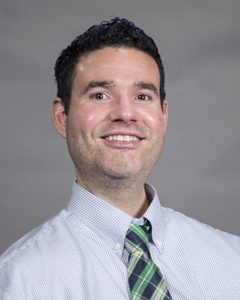
Chief, Office of Access and Functional Needs, California Governor’s Office of Emergency Services
The Whole Community: We Succeed or Fail Together
Abstract: Integrating every phase of the emergency management process to address the needs of individuals with access and functional needs before, during, and after disasters furthers preparedness, builds resilience, and empowers the whole community.
Bio: Luis “Vance” Taylor is the Chief of the Office of Access and Functional Needs at the California Governor’s Office of Emergency Services. Vance is responsible for ensuring the needs of individuals with disabilities and persons with access or functional needs are identified before, during and after disasters and integrated into the State’s emergency management systems.
Born and raised in the San Francisco Bay Area, Vance was diagnosed with muscular dystrophy as a child and uses a power wheelchair. He has worked in Washington, D.C. as an advisor for two different members of Congress, directed security policy at a national water association and been a principal at a top-ranked homeland security and emergency management consulting firm. Vance is a nationally recognized public speaker and advocate for individuals with disabilities.
Vance has a Master’s degree in homeland security from the University of Connecticut and an undergraduate degree from Brigham Young University in communications. He is married to his sweetheart, Casey, and they have two wonderful daughters.
Vance and his family live in Rancho Cordova, CA.
Benjamin Zaitchik
Professor, Johns Hopkins University
Anticipating and addressing complex climate hazards
Abstract: Both climate extremes and earthquakes can present severe shocks to human and natural systems, bringing the potential for substantial harm during the event and continued burden during the recovery period. This presentation will introduce three themes from the study of climate risks that may be relevant to thinking about earthquake resilience in the context of global change. First, I will review recent updates to the Intergovernmental Panel on Climate Change framework for evaluating risk as a function of vulnerability, exposure, impact, and response. Next, I will consider case studies in propagating risks, in which an initial climate extreme has spatially or temporally distal impacts via its impacts on markets and other networks. Finally, I will address concepts of compound and cascading hazards, which may be relevant to earthquake resilience both as an analogy and as multi-hazard processes in which climate and earthquake risks interact to affect outcomes.
Bio: Dr. Benjamin Zaitchik is a Professor in the Department of Earth and Planetary Sciences at Johns Hopkins University. He is an Earth scientist whose work includes study of fundamental atmospheric and hydrological processes as well as application of this knowledge to problems of water resources, agriculture, and human health. In this context, Dr. Zaitchik leads multiple projects focused on the propagation of climate stresses through complex coupled natural-human systems. Prior to joining Johns Hopkins University, Dr. Zaitchik was a Research Associate at NASA and a AAAS Fellow at the U.S. Department of State. He is currently the President of the GeoHealth Section of the American Geophysical Union, Chair of the World Meteorological Organization Research Board Task Team on COVID-19 and climate, meteorological, and environmental factors, and a Commissioner on the City of Baltimore Sustainability Commission.

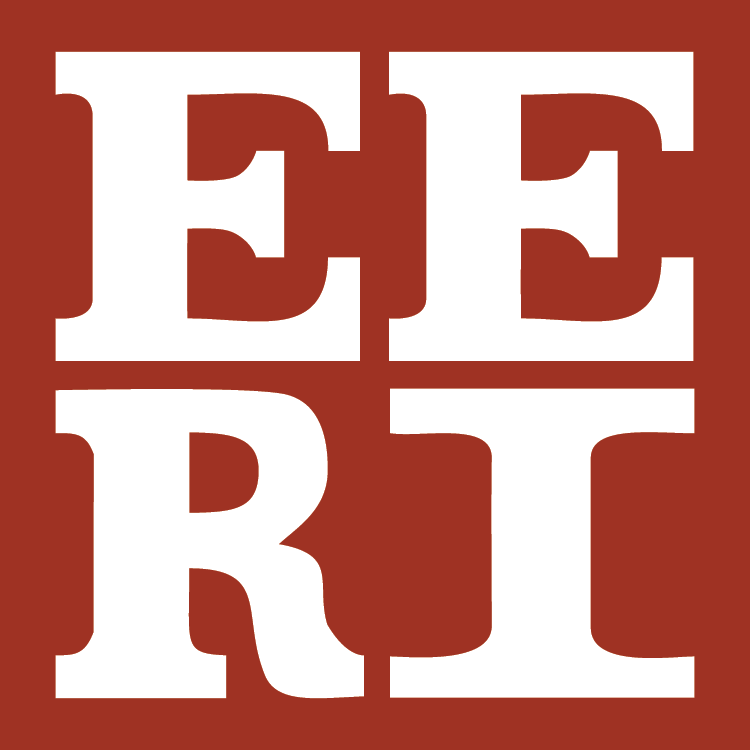
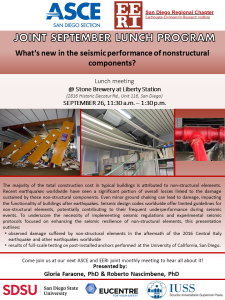
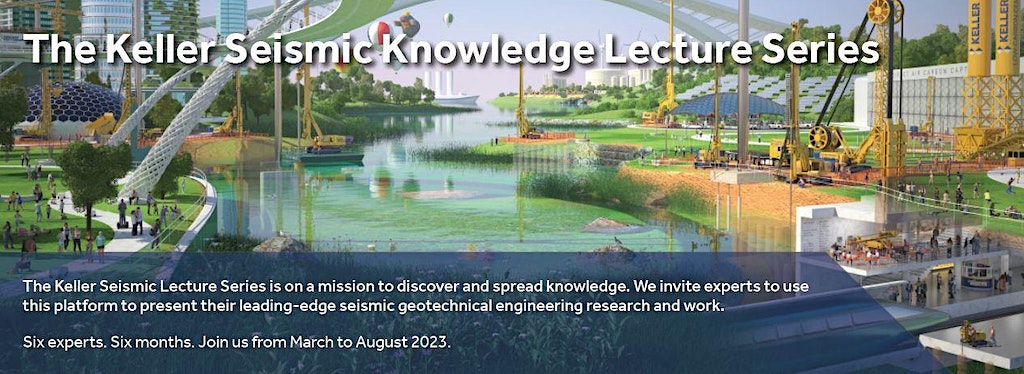

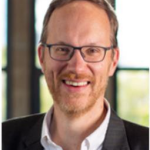











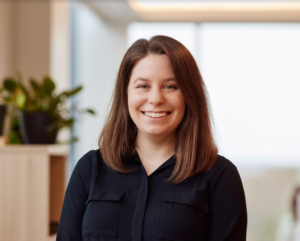
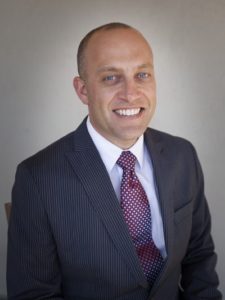

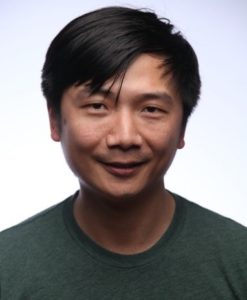
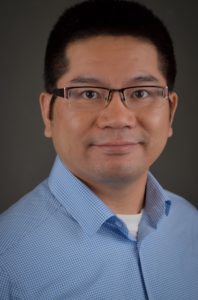

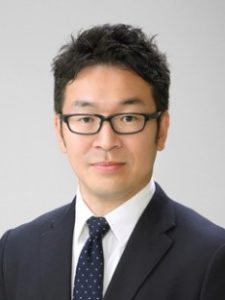
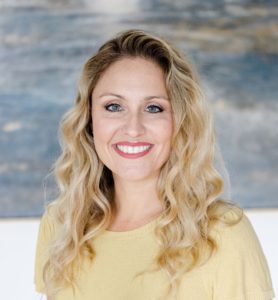
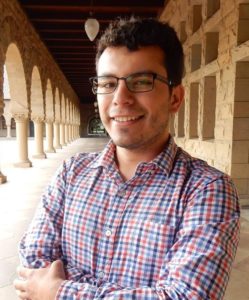
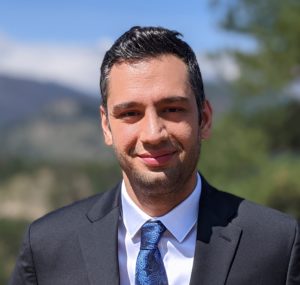


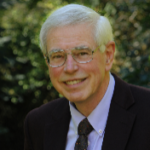
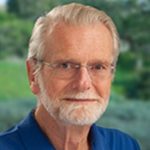

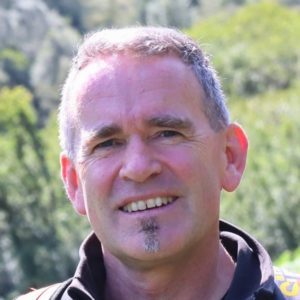
 Senior Principal, Degenkolb Engineers
Senior Principal, Degenkolb Engineers